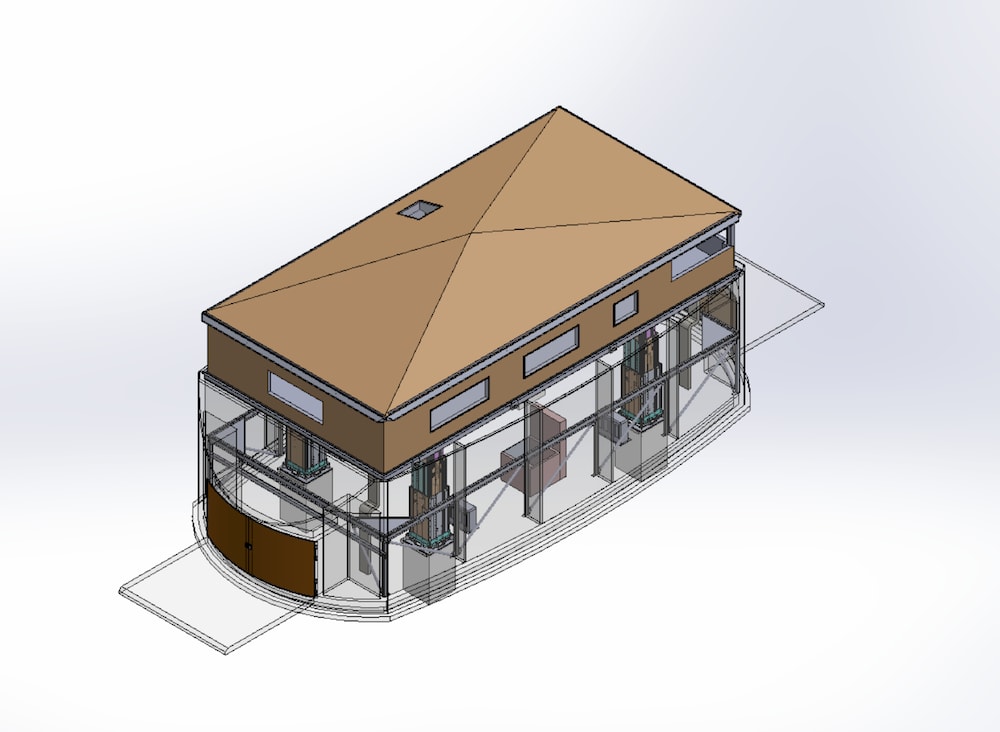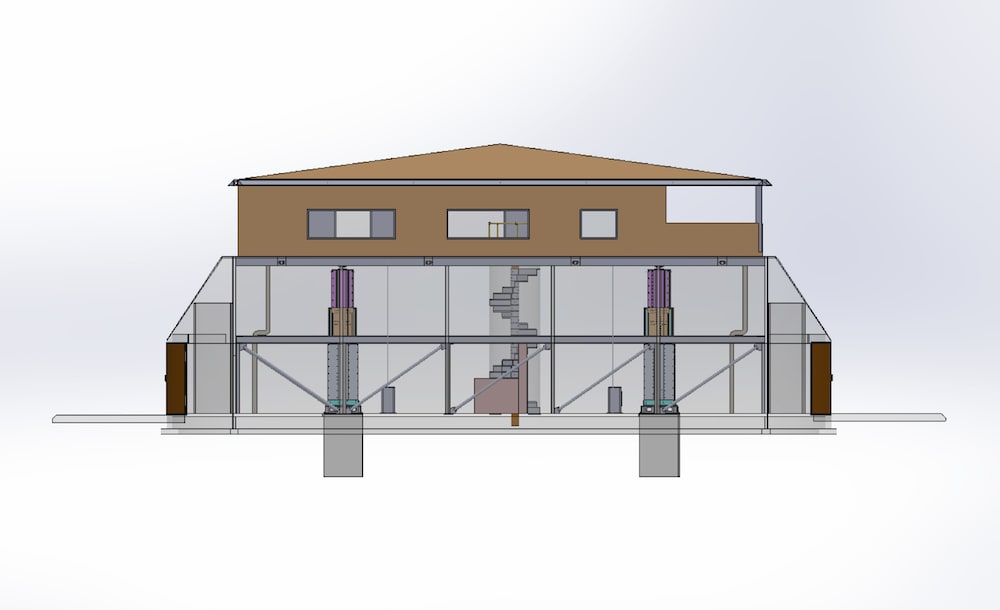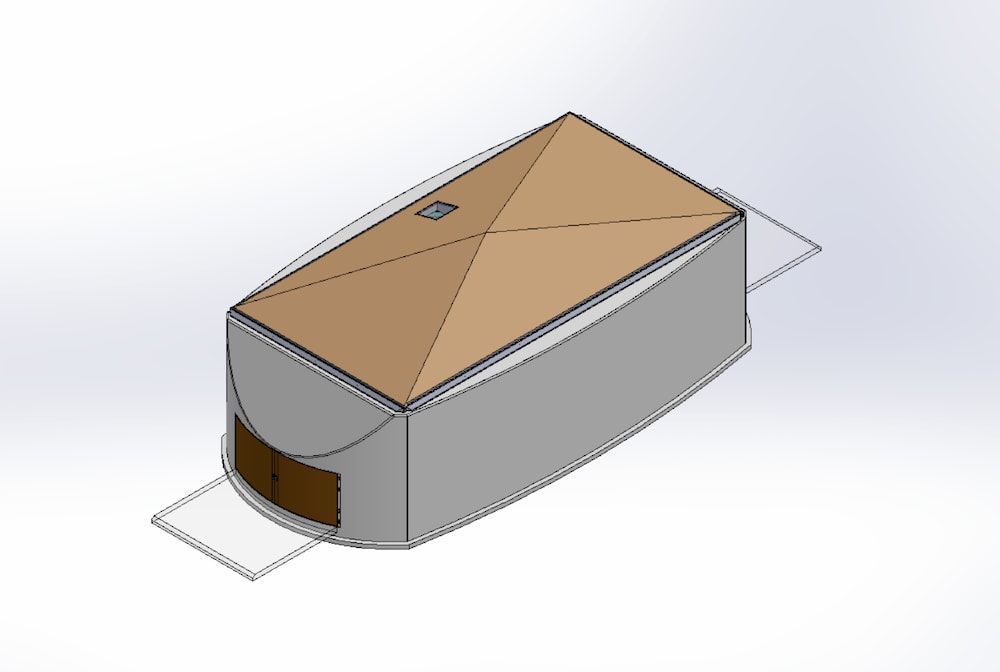The present invention relates to above ground shelter which can be installed in a new construction or can be retrofitted and would provide substantially more protection for people, possessions, and home from disasters, such as forest fires, river flooding, mud slides, most earthquakes, tsunami, tornadoes, and hurricanes than current available options.
Tornadoes, Hurricanes and other extreme weather scenarios are dangerous meteorological events that can occur anywhere in North America and have been observed on all continents except Antarctica. These storms can be devastating to life and property.
In the embodiment of the invention, a home is above ground and can be retracted into the foundation of which a portion is above foundation during a tornado warning or any other extreme weather scenario such that the edge of the roof becomes flush with the upper foundation plate. A concrete structure with reinforced bars in walls and in the floor with a structural frame supporting the substructure that the building is positioned on when retracted, is constructed around the building with a structural frame enclosed onto the interior open volume sufficient for the building to be positioned onto. Dual metal sealed doors are located at each end of the foundation structure allowing vehicles and people to enter and exit.
Within the foundation structure are telescopic jack assemblies that allow control for lowering and raising of the substructure and building. The substructure encompasses a shock isolation pad located outside and around the periphery and lock assemblies on each side that engage in tapered slots located on the side plates embedded around the periphery in the upper portion of the concrete foundation. Whereas the top surface of the substructure is flush with the top of the foundation. The lock assemblies are engaged and support the substructure and building weight when the jack assembly is turned off. Each lock assembly has as electric actuator that operates on 12 DVC. The lock assemblies are activated and operated in unison, while the jack assemblies support the weight of the building. The jack assemblies lift up the substructure relieving the load from the assembly pins. Thereafter, the jack assemblies lower the substructure down on the frame assembly and the power to the jacks are turned off. The lower structure also encompasses the jack controls, entry through doors at each end of the foundation structure, lift platform or elevator, electrical controls, generator, water lines, and sewer lines and provide stairway access to the house and to an emergency exit on the roof.
The external foundation configuration and roof is shaped to allow turbulent wind traveling up to 300 mph to become laminar flow reducing the wind force on the structure and the roof. Adding a 45 degree wind deflector around the periphery decreases wind forces.
The attached sketches depict the building being lowered and raised. In addition the sketch depicts the side elevation looking through inside showing various features and equipment as described above.
Also, additional information and sketches are available on requested.
Like this entry?
-
About the Entrant
- Name:Oliver Groves
- Type of entry:individual
- Software used for this entry:solid works premium
- Patent status:pending








